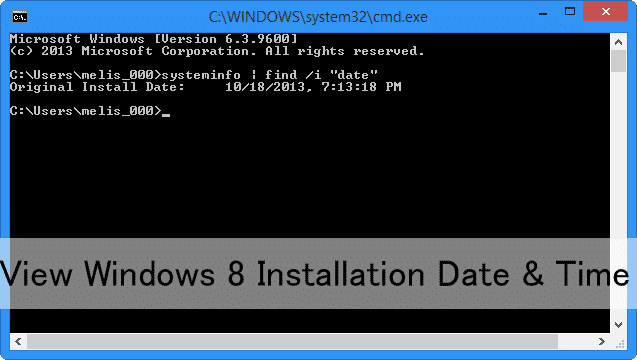
Windows never seem to make the easier things easy and the hard things hard. For consumers, it’s a constant battle of finding practical ways to do things that should be practical to do from the start.
If you’re interested in finding the date and time you originally installed Windows 8 or Windows 8.1 on your PC, we’re about to show you the steps and why this is an important thing to check on time from time.
Find the Windows 8 Installation Date and Time
There are several different ways to view the Windows 8 installation date and time. I’m only going to show you one, because it’s the simplest method, and there’s no reason why you need to go through complicated steps in the registry or be misguided by what the Windows folder itself says.
These steps will work in Windows 8 or Windows 8.1.
Open the Run command with the “Windows Key + R” keyboard shortcut.
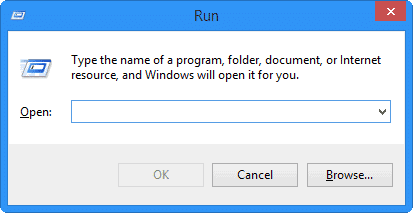
Type in “cmd” and click “OK.”
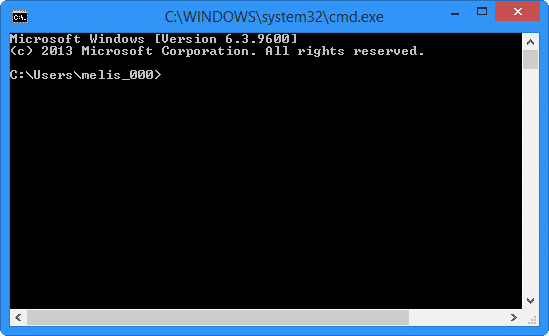
This will open the Command Prompt. You do not need to run an elevated administrator-level command prompt to see this information on your PC.
Copy the following prompt into the Command Prompt window:
systeminfo | find /i “date”
Click “Enter.”
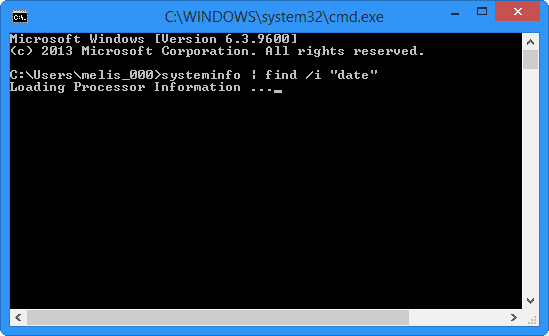
It’ll take a few moments for Windows to load the data. It’ll scan all aspects of your PC and eventually tell you the date of time of your Windows 8 installation.
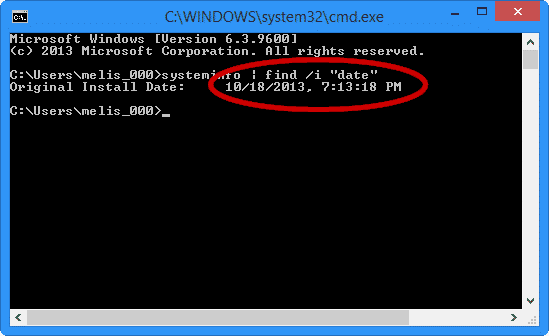
In this case, it’s showing us when I installed Windows 8.1 on this laptop.
This can be a nifty way to determine when you last did a clean install on your laptop or desktop so you can judge when you need to perform another one, do certain maintenance or perhaps give that information to a tech support agent for troubleshooting purposes.
This is by far the easiest way to find this information. If you check the Windows folder properties, this is often never accurate because as you create a system restore images, change settings and other factors, it’ll fluctuate between the actual installation date and time to when you performed other functions.
Why Do You Need to Know When You Installed Windows 8?
There’s some debate in the computer world on whether or not clean installing Windows every six months on average is beneficial or not. In the short-term, it does free up space, recover memory and make your computer run faster. The reason for this is because your computer is now free of all the excess installation, files, folders and processes that have at one point been used on the PC. Your cache, buffer memory and more have been wiped clean tabula rasa style and it’s like working on a brand new PC.
Except it’s not. It’s like a band-aid on a gunshot wound.
Every time you clean install Windows, you’re fighting the inevitable. Windows is only meant to last as long as it can on a PC based on the hardware life. Most PCs, desktops or laptops, are only viable to compete on the market for up to four months if you’re lucky. After that, the hardware of newer models begins to far outweigh what you’re using currently. This means that while clean installing Windows is a quick fix, eventually only new hardware or brand new PC is going to do the trick.
It’s up to each Windows users to determine what’s right for them. If it’s buying a new PC, buy a new PC; if it’s performing a clean install, perform a clean install. Just remember that eventually, a clean install isn’t going to fix an outdated computer and hardware, especially as Microsoft continues to release major updates to the Windows 8.1 operating system.
Conclusion
Depending on whom you talk to in the computer world, they recommend resetting or refreshing, clean installing or some other method to restore Windows 8, or any version for that matter, to a better state. It’s still up for debate whether this is an effective way to recover hard drive space, memory and other aspects of your PC but consumers still do it every handful of months.
Do you clean install Windows once a year or sooner? Why do you do it? Share your thoughts in the comments!







